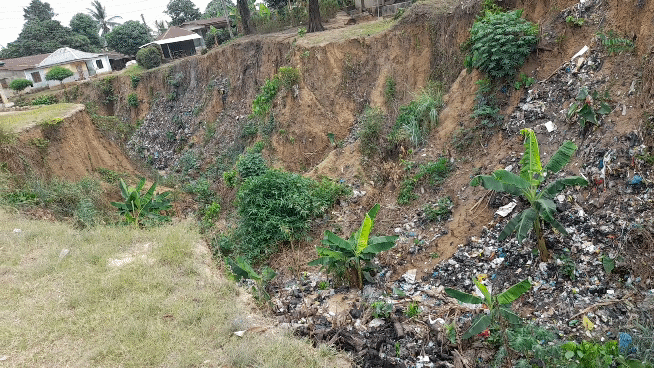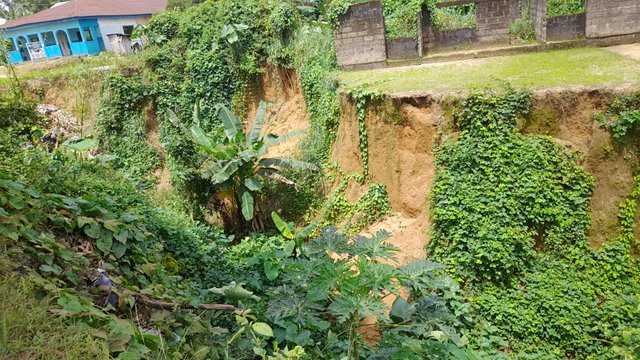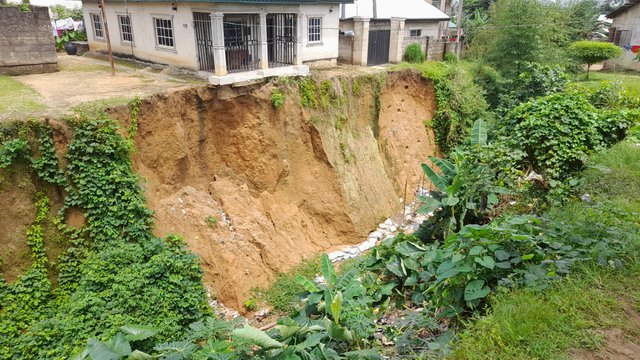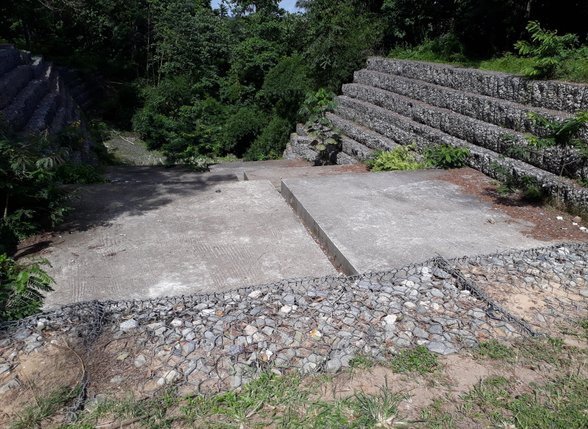Have you seen a ravine before?

Just when I was wondering about the power of erosion, my imagination went wild but one got me really in awe.
I pictured a deep, narrow, steep-sided valley with steep cliffs. A mountainous region where water run-off from rain or melting snow has cut deeply into the soil and rock.
 |
|---|
This imagination vividly describes a sight I beheld today while going to visit someone in my neighborhood - “A RAVINE”.
 |
|---|
What do you think of when you first hear the word - Ravine, perhaps you are scared, thinking of a deep, dangerous pit that likely collapses building and claims lives?.. I guess.
Well, while I am not disputing how dangerous a ravine can be, maybe I could briefly talk about some of its useful ecological benefits to the ecosystem and living organisms.
 |
|---|
And by the way, I am not praising this particular ravine that I visited on Sunday 5th March 2023 because it is very dangerous to the people living within.
Sooner or later, they will likely lose their buildings. I heard they have requested assistance from the government to sand fill this dangerous ravine. Unfortunately, they have spent a long time before doing that…I can’t say for sure if this solution will be possible soon from the government.
They said they have received many promises from government officials to help close that big dangerous ravine which is gradually cutting some buildings like earthquakes. Still, there has never been any action to cover that.
Some animals comfortably find their resting place here…like snakes. Some will build their nest under the steep, rocky slopes and dense vegetation, ravine provide food for some animal species, that’s why there are a lot of snakes living here, the occupant of this environment compliant that they kill snakes almost every day in this environment.
 |
|---|
There are sad realities associated with this natural occurrence and sometimes it’s good to talk about them as a way of educating others.
One of the main sad realities of ravines is that they are often sites of environmental degradation.
Due to their steep slopes and narrow bottoms, ravines are particularly vulnerable to erosion and runoff just like you all saw in the pictures and video I shared in this article.
This can lead to soil loss, water pollution, and other forms of environmental damage. In addition, ravines are often located in areas that are susceptible to flooding, which can further exacerbate these problems, and the environment I am standing right here is not exceptional.
Another sad reality of ravines is that they are often home to marginalized communities.
However, I can remember when I visited the university of Uyo last month, I also saw a ravine, but this other ravine is not like the one I saw earlier today. The one in the university of Uyo was beautiful enough for tourism and so at this point, I will say that some ravines are not bad ones.
Ravines can be beautiful and scenic areas for outdoor recreation and education. Many people value ravines for their natural beauty and the sense of connection to nature they provide such as what we have here at the University of Uyo.
It is very true that ravines can play an important role in supporting the ecosystem, the big question we should ask ourselves is, and I’m I contributing towards good and positive ecological factors influencing the proper use of ravines?
 |
|---|
It is important that we protect and conserve these areas to ensure that these benefits continue into the future. Trees and other vegetation in ravines can also help to improve. Imagine how calm this other ravine is ….!
Overall, while ravines can be beautiful and ecologically important, they are also home to a number of sad realities that must be addressed if we hope to create a more just and sustainable world.
What are your thoughts on the ravines? Do you think the people living in the affected environment mentioned above should keep waiting for the government to act? have your say...!
Cast a witness vote for @pennsif.witness
 |
|---|
[Photos/ graphics by @ubongudofot ]
I think filling in these faults is not a long-term solution.... It should minimise the acute danger of crashes and landslides. However, the residents need new homesteads in a different area that is not at risk from the expected quakes.
Ich denke, das Auffüllen dieser Verwerfungen ist keine langfristige Lösung... Es dürfte die akute Gefahr von Abstürzen und Erdrutschen minimieren. Die Anwohner brauchen jedoch neue Heimstätten in einer anderen Gegend, die nicht von den erwartbaren Beben gefährdet ist.
Exactly!
I was wondering if filling this space with sand could be the best solution.....on a second thought..., i reasoned there will be some crack after.
I heard they have been advised on many occasion to vaccuate that place.., but they insist that they dont have another place to live.
As it stands now..., they don't enter the sitting room..., they are all living at the last room in that building.
That is a bad state of affairs. To be honest, I cannot imagine that it is normal in Africa today to expose one's family to such a risk. In our country, there are many authorities who would intervene and find temporary solutions. Is there perhaps some kind of social service in your country that could feel responsible...? Or an insurance company? I know this is a very European way of thinking, but I don't think our systems are that different ;-((
Das ist ein schlimmer Zustand. Ich kann mir ehrlich gesagt nicht vorstellen, daß es in Afrika heutzutage normal sein soll, seine Familie so einem Risiko auszusetzen. Es gäbe bei uns jede Menge Behörden, die da einschreiten und vorübergehende Lösungen schaffen würden. Gibt es bei Euch vielleicht eine Art Sozialdienst, der sich zuständig fühlen könnte...? Oder eine Versicherung? Ich weiß, das ist eine sehr europäische Art zu denken, aber für so unterschiedlich halte ich unsere Systeme nun auch wieder nicht ;-((
Unfortunate reality of Africa..!
We have some authorities that would have taken such actions...but i can't remember the last time they were active.
Could it be that 20 years ago it was much more advanced...? I travelled a lot in Africa back then, also on business. I don't remember such terrible conditions.
Kann es sein, daß es vor 20 Jahren deutlich fortschrittlicher war...? Ich war viel in Afrika unterwegs damals, auch beruflich. An solche schlimmen Zustände kann ich mich nicht erinnern.
I think back then...things were done normally the way it should i guess, but i am not sure i have experience that..., I only learn it at school.., but in real life..it turn out to be a fiction movie.
So for those occupants in this affected zone.., it's up to them to vaccuate that place or not...., nobody us pressuring them. I am not sure they will even listern because what they normally complaint is that..."If we leave here, where are we going to stay? Will you provide accomodation for us?"
We support quality posts, and good comments anywhere, with any tags.
That's a great morning surprise 😊, thank you for your support bro @irawandedy.., enjoy your curation day!
It is very serious if the occupant are still in. It will be better if they can move.
Truely I have not seen a ravine, but with your post I have got to know what it will look like, I have been trying to do gif but don't know how to do it.
Can you suggest to me an app I can be using to create it??.